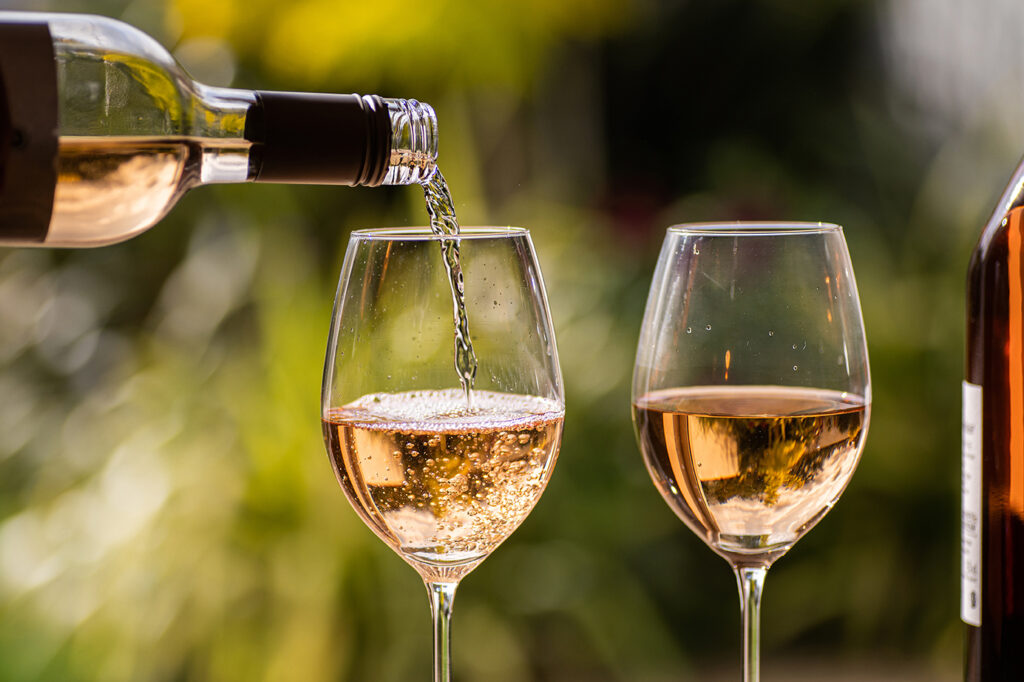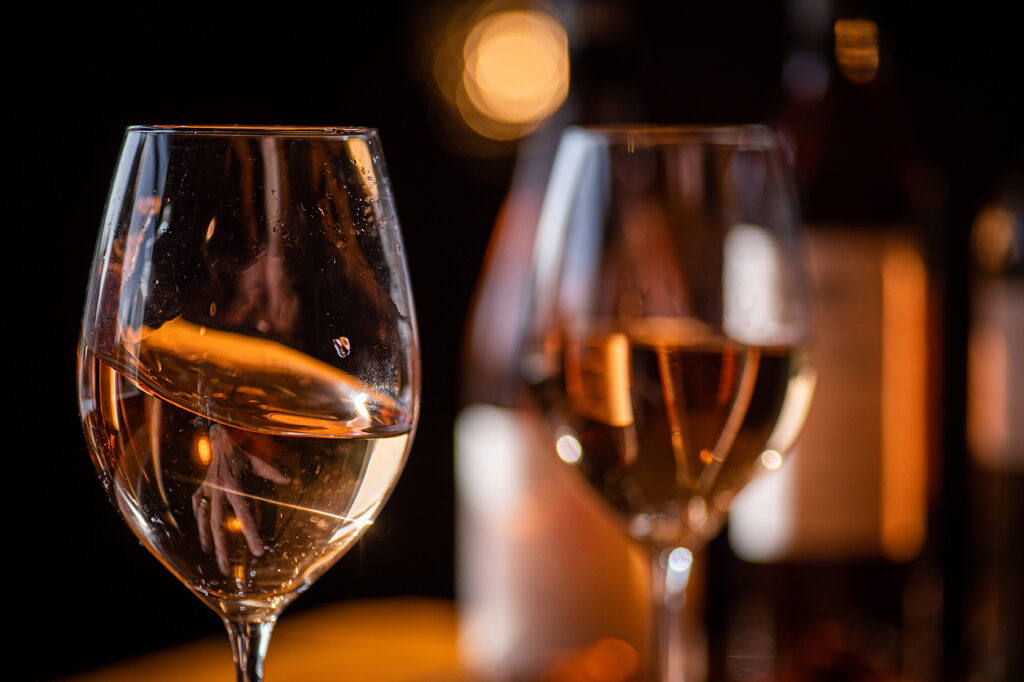By Tiffany Vernon
Approx time to read: 3 minutes
Rosé is a wine style that isn’t taken too seriously but it is perhaps more nuanced than you might think. Achieving a pretty pink hue to a wine requires skill, especially if creating a paler Provence style, whilst without compromising on flavour… But how is it done? Read on to discover the three main techniques employed to make your favourite glass of pink.

Blending
Perhaps blending a bit of red with white seems the obvious answer, but this method isn’t actually permitted for most quality wines. Except for, perhaps ironically, in one of the most prestigious winemaking regions: Champagne. The two black grape varieties of this famous sparkling are Pinot Noir and Pinot Meunier; however, their juice is so pale in colour that it may as well have come from white grapes. Seeing as the colour for any wine largely comes from the grape skins — be it a deep yellow or a rich red — the Champagne house’s Chef de Cave mitigates the lack of colour by making a separate still red wine and blending around 15% of that into their Champagne to make it pink. This inevitably changes the structural composition and flavours of the finished wine, so some producers prefer to seek more painstaking methods instead (read on for more).

Maceration
This is by far the most popular method and takes its inspiration from red winemaking, whereby the grape skins are left in contact with the juice. This process not only extracts the colour but the phenolics too (e.g. tannins), which are also present in the skins. Therefore, the longer you leave the wine to macerate, the darker and more tannic the juice will become (effectively, it becomes a red wine). Typically, to make a rosé, a winemaker will do a short maceration of black grapes just after crushing them in a tank or press. Once the juice has had long enough to extract the desired amount of colour, the juice is racked off the skins and fermented as though it is a white wine. For highly pigmented grape varieties, just a few short hours of maceration are normally sufficient, whereas for paler grapes, 1-2 days might be required.
To create particularly pale pinks, French winemakers have developed the saignée method, which translates as ‘to bleed’. This technique involves running off or ‘bleeding’ a proportion of free-run juice from just-crushed black grapes after a short maceration. This not only reduces the amount of pigmentation in the juice but can also increase the phenolics to give more texture to the wine.
Example: Chiaretto di Bardolino DOC, Cantina Menegotti undergoes a cool maceration for around 12-18 hours to extract just enough colour and enhance fruit flavours. Sour cherry and strawberry notes combine with a delicate creamy texture to give a refreshingly crisp yet fruity style.

Pressing
Pressing is the process of applying pressure to grapes to squeeze out the juice. Depending on the desired colour and the characteristics of the grape variety, this technique has a few options. The first is to press the whole grapes without crushing them; the second is to press grapes immediately after they have been crushed and destemmed; or the third option is to press crushed and destemmed grapes after they have undergone a period of skin contact.
Example: Sancerre Rosé, Domaine Bernard Fleuriet et Fils is made using direct pressing and fermentation in cement vats to preserve its fresh and delicate aromas. Notes of red berries and zest lead to a silky palate of cherries and cream complemented by a floral note and classic Sancerrois minerality.
You can shop our full rosé selection here.

